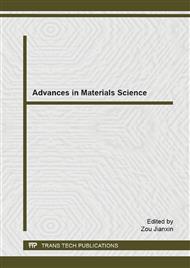p.148
p.153
p.159
p.164
p.169
p.174
p.181
p.186
p.191
Environmental Effects on Electrochemical Behaviors of Materials of a Dissimilar Metal Weld Exposed to High Temperature Primary Water of PWR Nuclear Power Plants
Abstract:
The effects of environmental factors on the electrochemical behaviors of the materials 52M and 316L taken from a dissimilar metal weld exposed to high temperature primary water of pressurized water reactor (PWR) nuclear power plants were studied experimentally, mainly on the effects of impurities chloride and sulfate in water, temperature and dissolved oxygen on the polarization curves, in order to provide fundamental data for relevant research and development. The results showed that doping chloride and sulfate into the water caused the rise of the tendency to pitting and general corrosion tendencies of both materials. With the rise of temperature from 160 °C to 290 °C, the tendencies to corrosion in anodic condition increased. The rise of the dissolved oxygen led to the rises of both the corrosion potentials and also the tendencies to corrosion.
Info:
Periodical:
Pages:
169-173
Citation:
Online since:
February 2015
Authors:
Price:
Сopyright:
© 2015 Trans Tech Publications Ltd. All Rights Reserved
Share:
Citation:


